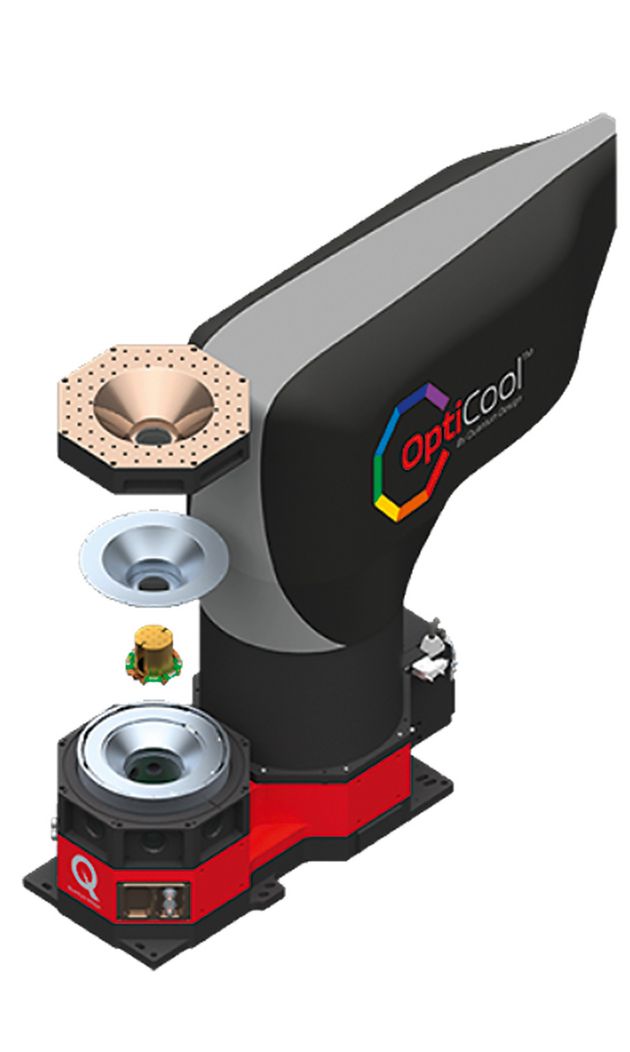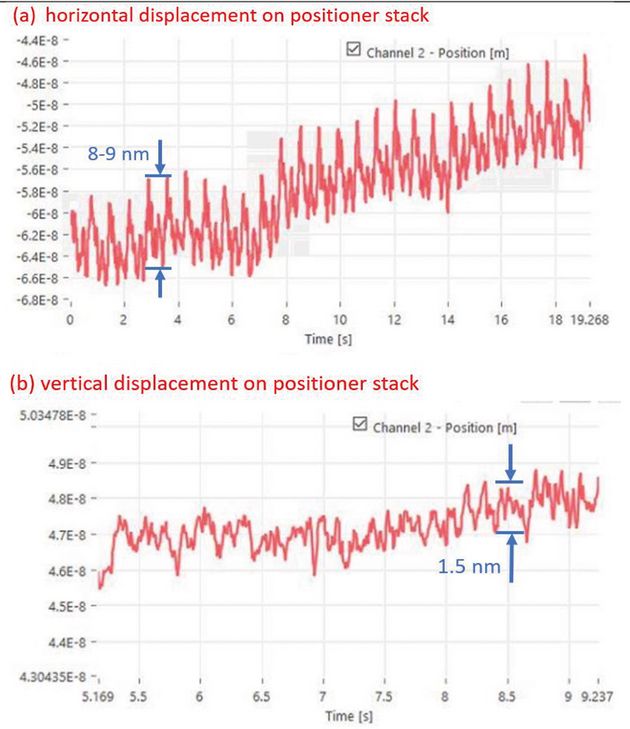Vibrations in OptiCool – A Closer Look
Das OptiCool ist ein optischer Kryostat mit supraleitenden Magneten und geschlossenem Heliumkreislauf von Quantum Design. Der supraleitende Magnet erfordert einen großen Kaltkopf, welcher konstruktionsbedingt erhebliche Vibrationen emittiert. Dank einer neuartigen Vibrationsisolierung ist die Probenkammer mechanisch fast vollständig vom Kaltkopf entkoppelt. Es gibt unterschiedliche Wege, eine geringe Vibrationsamplitude zu erreichen, wie dieser Artikel am Beispiel des X130 Positioniersystems zeigen wird. Allein die Amplitude reicht nicht aus, um die Performance bestimmter Versuchsaufbauten vorherzusagen.
Am Probenhalter, Sample Pod genannt, liegt die Amplitude bei gerade einmal 10 nm Peak-to-Peak bei 1.7 K Basistemperatur. Für die meisten Anwendungen wird ein Piezo-Positioniersystem für den Probenhalter benötigt. Diese Positionierer haben eine niedrige Resonanzfrequenz und schwingen entsprechend stark, wenn sie angeregt werden. Auch bei Kryostaten mit einer Vibrationisolierung ist die Amplitude auf den Positionierern deswegen nicht selten um einen Faktor 5 - 10 höher als am Boden der Probenkammer.
Das X130 Positioniersystem besteht aus zwei ANPx311/RES/LT/HV Piezos (X und Y) und einem ANPz102/RES/LT/HV (Z) von Attocube. Gemessen wurde mit einem SmarAct PicoScale Laser Interferometer, welches auf eine Bandweite von 153 Hz eingestellt wurde.
Figure 1 shows the time-dependent amplitude in (a) horizontal and (b) vertical directions. The peak-to-peak amplitude is just 8-9 nm horizontally and 1.5 nm vertically. These are the same values as those that are measured directly on the surface of the sample pod. This shows that, despite the positioning system, the vibrations are not stronger. This is due to the low forces acting on the sample pod. A low amplitude can be achieved either by minimizing the acting forces and/or by a design with high stiffness, which means high resonant frequency. The fact that the low stiffness of the piezos does not negatively affect performance shows clearly that hardly any kinetic energy is transferred from the cold head to the sample pod. It is thus not necessary to use a design with high stiffness. Accordingly, this also applies to all hardware that is installed on the sample pod in connection with the experiment (e.g. sample holder or positioning system).
Contact
| +49 6157 80710-499 | |
| +49 6157 807109499 | |
| Write e-mail |





